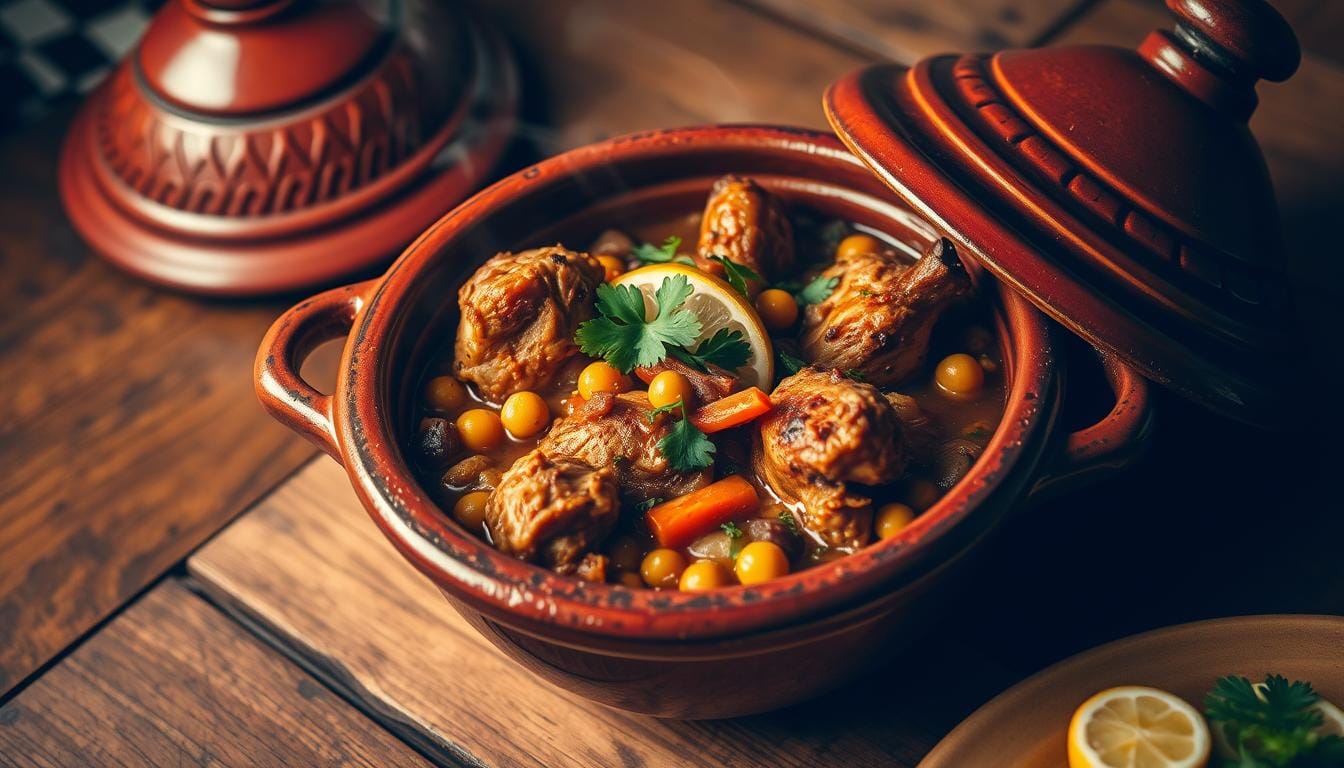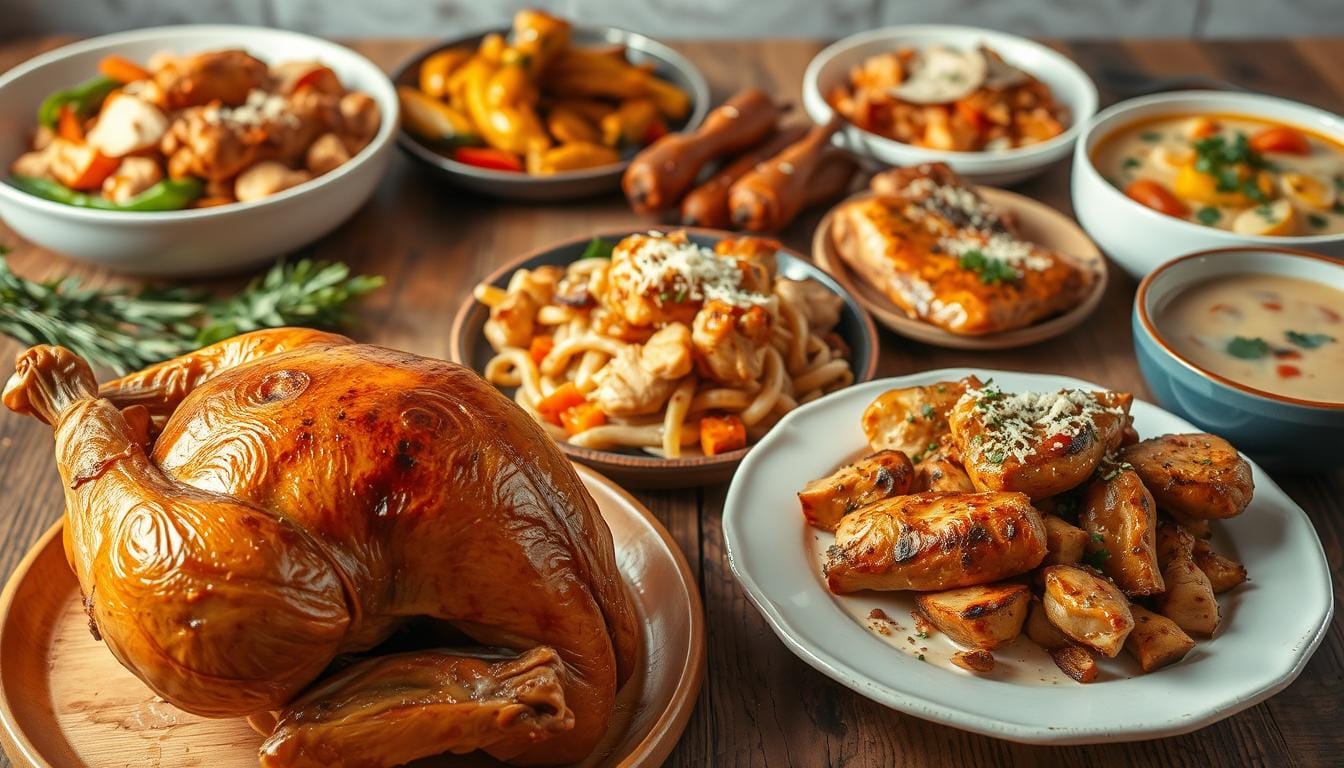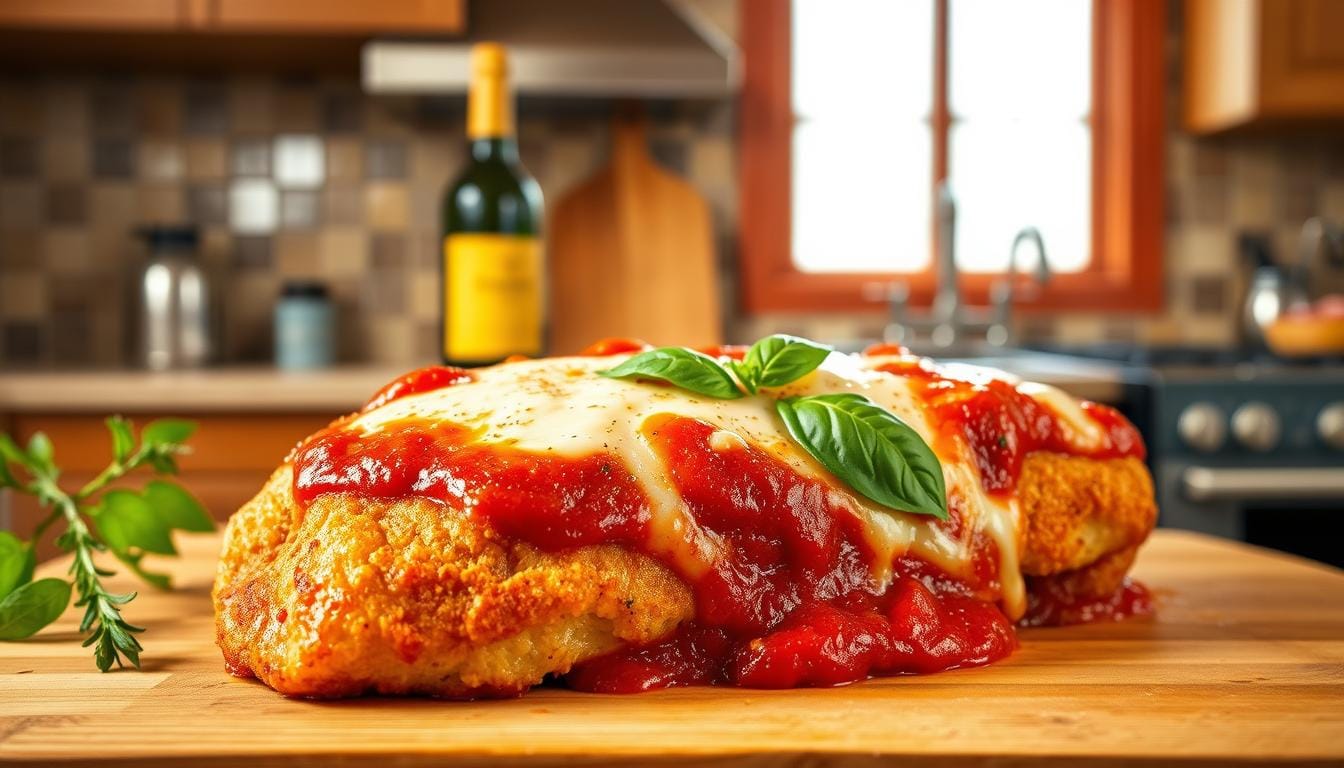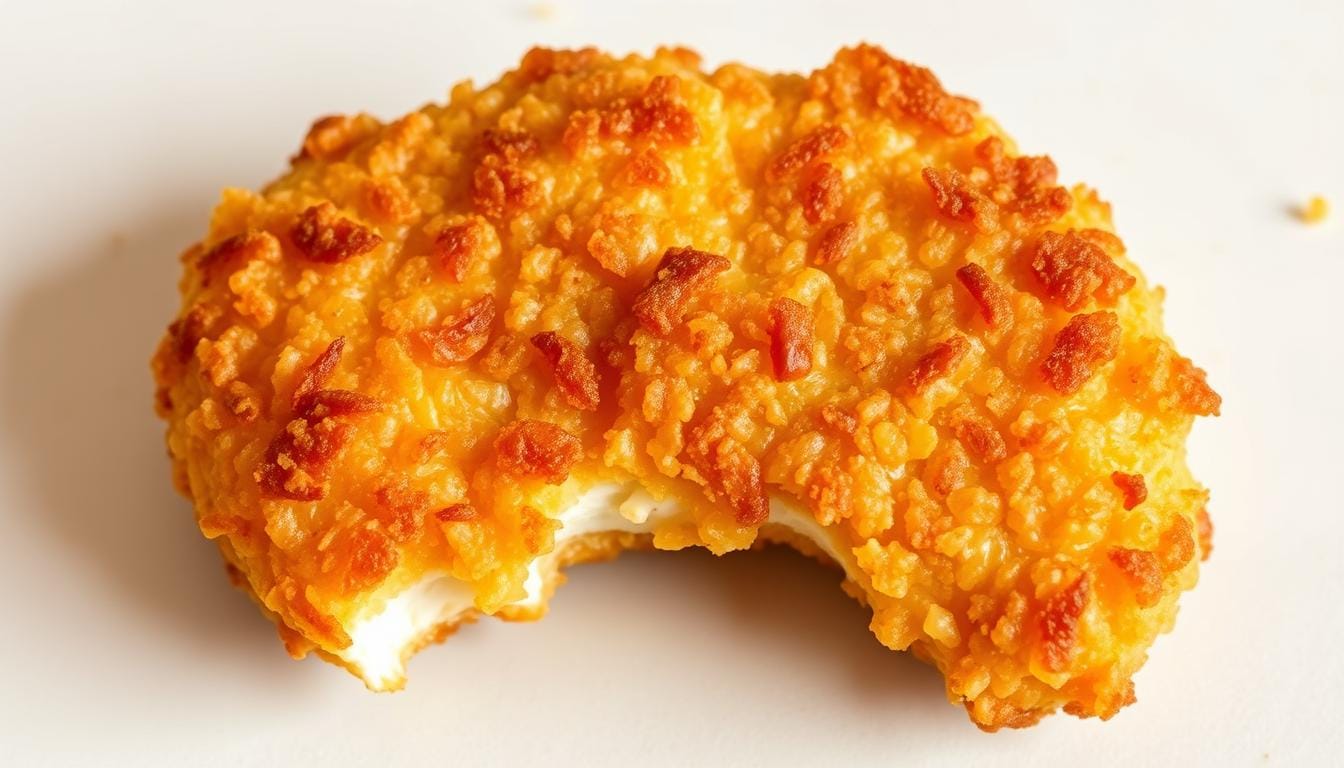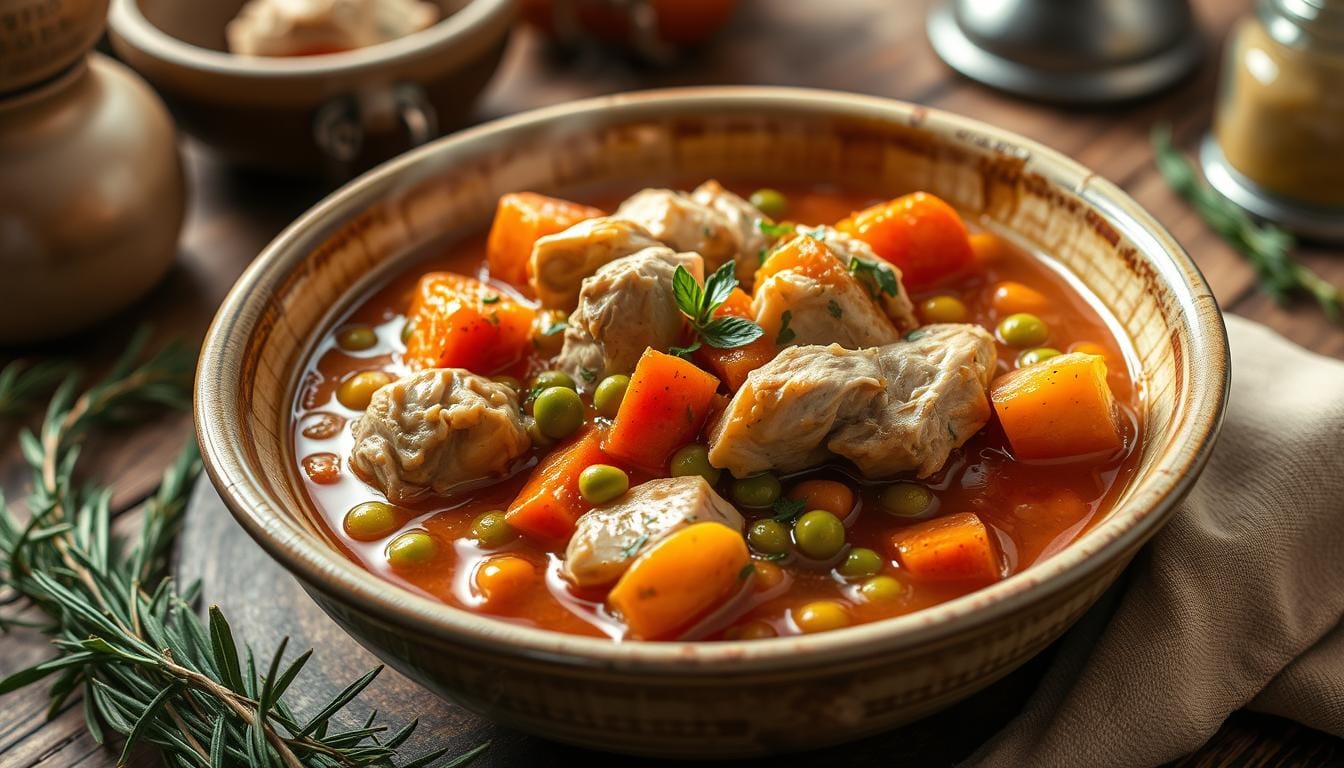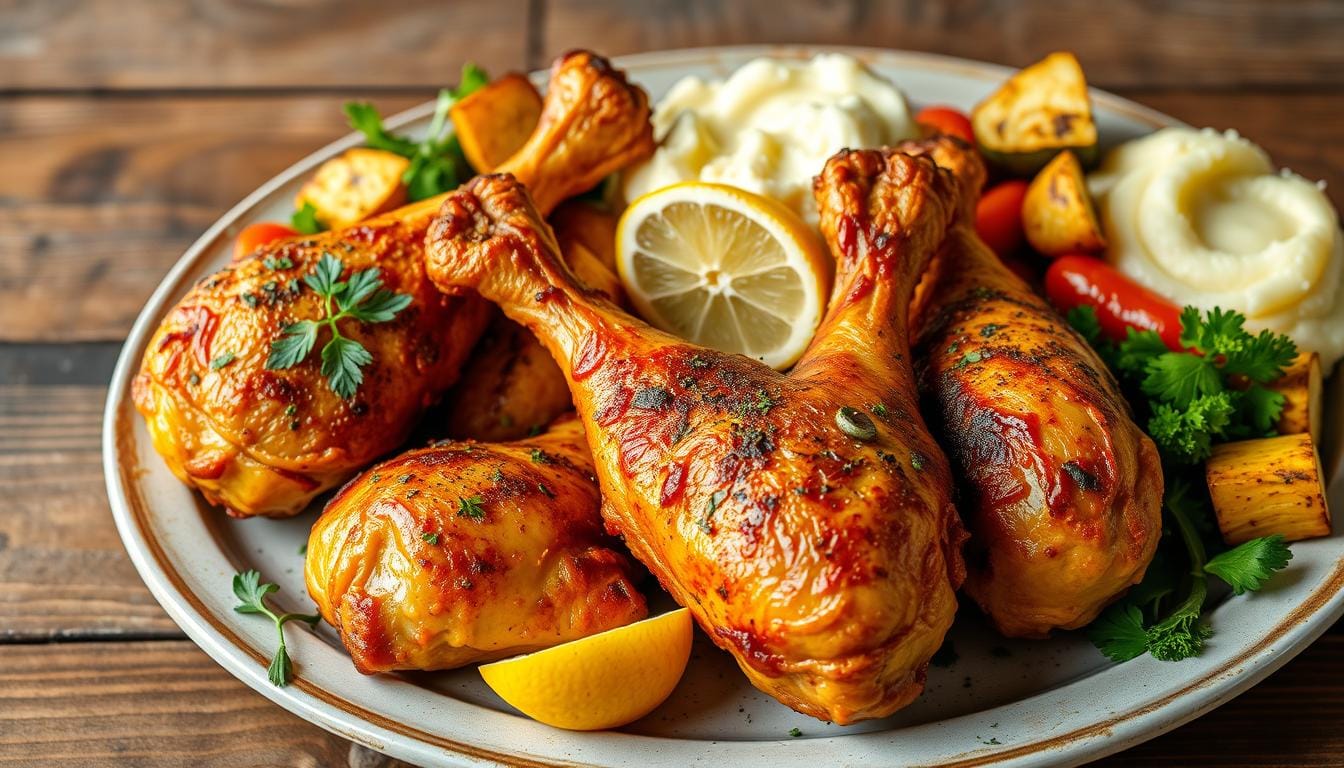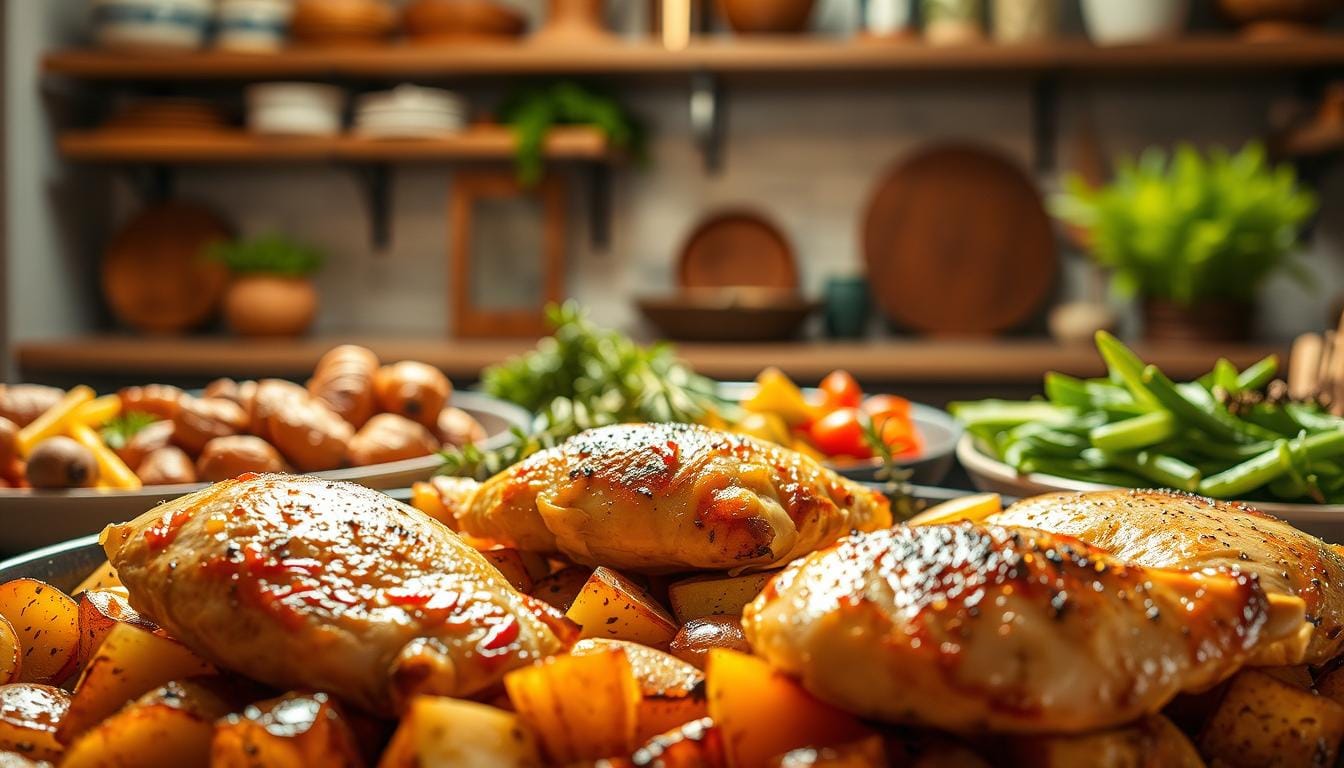How to Make an Authentic Moroccan Tajine at Home
The first time I smelled a Moroccan tajine, I felt like I was in Marrakech’s markets. The mix of spices and slow-cooked meats was like a story of tradition. It was more than just cooking.
Moroccan food is a journey of flavors that have been perfected over time. A tajine is not just a meal. It’s a cultural experience that turns simple ingredients into amazing dishes with love and patience.
In this guide, you’ll learn to make a real North African recipe. It brings Moroccan traditions right into your kitchen. Whether you’re an experienced cook or just starting, making a Moroccan tajine opens up a world of flavors and techniques.
Your Moroccan food adventure begins here. This technique turns simple ingredients into a flavor symphony. You’ll learn to make an authentic tajine that connects you to centuries of culinary heritage.
Understanding the Traditional Moroccan Tajine: Origins and Significance
Moroccan cuisine is a vibrant mix of centuries of tradition. The tajine is more than a cooking method. It’s a symbol that connects generations through food and cooking.
The heart of Moroccan cooking is in the clay pot. This pot has been key to North African cuisine for thousands of years. It turns simple ingredients into rich, flavorful meals.
The Cultural Heritage of Tajine Cooking
Tajine cooking started with Berber communities in Morocco. They used slow-cooking to make tender, flavorful meals. These dishes show a philosophy of patience and respect for ingredients.
- Passed down through generations
- Integral to family and community gatherings
- Symbolizes hospitality and sharing
Different Types of Tajine Vessels
Moroccan kitchens have many tajine vessels, each unique. The most valued are handcrafted clay pots. They turn cooking into an art.
- Unglazed clay tajines: Traditional, porous design
- Glazed ceramic tajines: Decorative and practical
- Modern metal tajines: Contemporary cooking option
Why Clay Pots Make the Best Tajines
Clay pot cooking is unmatched for authentic Moroccan dishes. The clay’s porosity lets moisture circulate. This makes dishes tender and flavorful, unlike other methods.
Cooking in a traditional clay tajine is more than making a meal. It’s joining a centuries-old culinary tradition.
Essential Spices and Ingredients for Your Moroccan Tajine
Making a real Moroccan tagine recipe needs a mix of spices and herbs. These turn simple foods into a dish that’s truly special. The spice blend is the heart of any Moroccan chicken tagine.
Your spices and herbs are the key to a dish that stands out. Moroccan cuisine is known for its spices. Here are some important ones:
- Ras el Hanout: A mix of up to 20 different spices
- Cumin: It adds a warm, earthy taste
- Saffron: Gives a rich golden color and a delicate flavor
- Turmeric: Adds a vibrant yellow color and a bit of warmth
- Paprika: It brings a gentle sweetness and color
Fresh herbs are also crucial in your Moroccan tagine. Cilantro and parsley do more than just look good. They add freshness and flavor to the dish.
When you’re shopping for ingredients, check out specialty spice shops or online stores for Middle Eastern items. Grinding your own spices will give your dish the best flavor.
Pro tip: Keep your spices in airtight containers, away from light and heat. This keeps their flavor strong and makes your tagine taste amazing.
Preparing and Seasoning Your Clay Tajine Pot
Clay pot cooking is an ancient art that needs care. Your tajine pot is more than a cooking vessel. It’s a delicate tool that requires proper care for great slow cooking.
How to Cure a New Tajine
Curing your clay tajine is key for a durable, non-stick surface. Follow these steps to prepare your new pot:
- Soak the entire tajine in water for 2-3 hours before first use
- Pat dry completely with a clean kitchen towel
- Brush the interior with olive oil
- Place in a cold oven and gradually heat to 300°F
- Maintain temperature for 1 hour
- Turn off oven and let tajine cool naturally
Maintaining Your Tajine Pot
Proper care keeps your clay pot cooking experience top-notch for years. Clean your tajine with mild soap and warm water. Avoid harsh scrubbers that can damage the surface.
| Maintenance Task | Frequency | Purpose |
|---|---|---|
| Hand washing | After each use | Preserve ceramic coating |
| Oil coating | Monthly | Prevent cracking |
| Storage | Always | Keep in dry, cool place |
Safety Tips for Clay Pot Cooking
Slow cooking in a clay tajine needs careful attention. Never place a cold tajine on a hot surface or expose it to sudden temperature changes. Always use a heat diffuser on stovetops and handle with care to keep it intact.
- Use low to medium heat settings
- Avoid direct flame contact
- Allow gradual heating and cooling
- Store in a padded environment
Classic Moroccan Tajine Recipe: Step-by-Step Guide
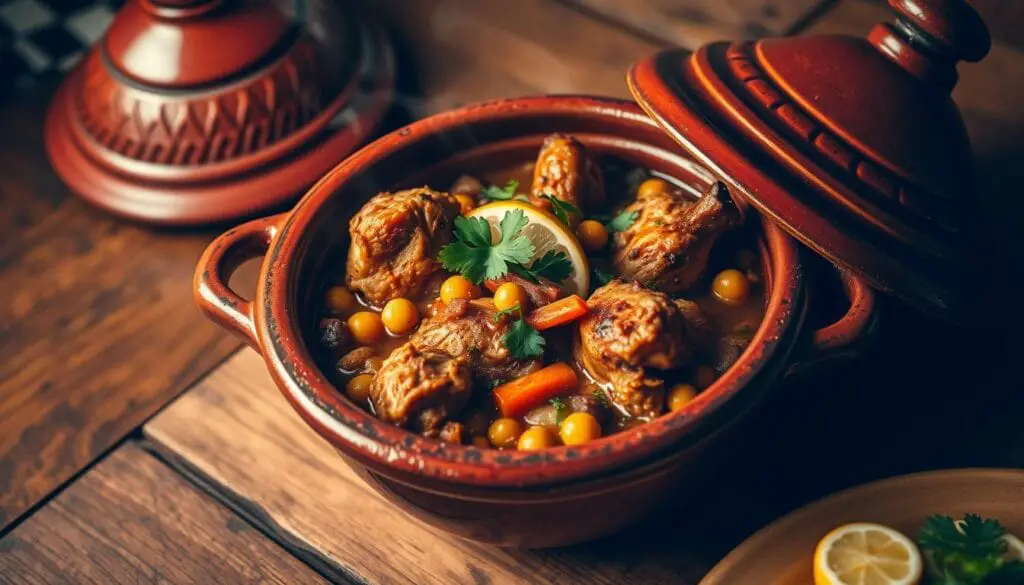
Making a real Moroccan tagine recipe needs passion, skill, and the best ingredients. Start by picking top-notch proteins like chicken or lamb for your dish.
Ingredients for Your Moroccan Tagine
- 2 lbs chicken or lamb meat
- 2 large onions, chopped
- 3 garlic cloves, minced
- Fresh herbs (cilantro, parsley)
- Signature spice blend
The secret of a great chicken or lamb tagine is its spice mix. Moroccan spices turn simple foods into a true work of art.
Spice Blend Preparation
| Spice | Quantity | Purpose |
|---|---|---|
| Cumin | 2 tsp | Earthy warmth |
| Paprika | 1 tsp | Mild heat |
| Ginger | 1 tsp | Aromatic depth |
| Turmeric | 1/2 tsp | Color and flavor |
Cooking a Moroccan tagine takes time. Begin by marinating your meat in the spice mix for at least two hours. This lets the flavors soak in deeply.
Cooking Technique
- Layer vegetables at the bottom of your tagine pot
- Place marinated meat on top of vegetables
- Add liquid (water or broth)
- Cover and simmer on low heat
- Cook for 1.5-2 hours until meat is tender
The key to a fantastic chicken or lamb tagine is slow cooking. It lets the spices blend and the meat become very tender.
Mastering Traditional Tajine Cooking Techniques
Tajine cooking is an art that needs precision and patience. Learning the cooking methods can make your dishes go from good to great. Slow cooking is key, letting flavors blend and ingredients become tender.
Chefs like Ottolenghi and Jamie Oliver have their own ways of making chicken tagine better. They focus on choosing the right ingredients and controlling the heat.
Layering Ingredients with Precision
Good tajine cooking starts with how you arrange ingredients. Here are some tips:
- Put harder vegetables at the bottom of the pot
- Put delicate proteins in the middle
- Spread aromatic spices all over
- Make sure each ingredient touches the cooking liquid
Mastering Temperature Control
Keeping the heat low is key for slow cooking tajines. You want a gentle simmer. This helps ingredients cook without burning or getting tough.
| Cooking Stage | Temperature Range | Recommended Duration |
|---|---|---|
| Initial Heating | Low (250-300°F) | 15-20 minutes |
| Main Cooking | Very Low (200-250°F) | 60-90 minutes |
| Final Reduction | Low (250-300°F) | 15-20 minutes |
Recognizing Perfect Doneness
Knowing when your tajine is done needs your senses. Look for these signs:
- Meat should be tender and easy to pull apart
- Vegetables should be soft but not mushy
- Sauce should be rich and slightly thick
- Aromatic spices should smell complex
By mastering these techniques, you can make chicken tagine dishes as good as Ottolenghi and Jamie Oliver. You’ll bring authentic Moroccan flavors to your kitchen.
Common Tajine Variations: From Lamb to Vegetarian Options
Moroccan tajine cooking is incredibly flexible. It lets you try many tasty recipes. You can make everything from meat stews to veggie dishes, all in one pot.
For beginners, easy chicken tajine recipes are a great start. Chicken pairs well with spices like ras el hanout, making dishes tender and flavorful. You can make them in under an hour. Lamb and beef add deeper flavors to your meals.
Vegetarians and vegans have plenty to choose from too. Moroccan tagine vegetarian options are amazing. Chickpeas, root veggies, and seasonal produce make stunning meals. Sweet potatoes, carrots, and zucchini soak up spices, making hearty plant-based dishes.
Exploring Morocco’s regions opens up a world of tajine recipes. Each area has its own ingredients and cooking styles. You can try everything from fish-based dishes to those with dried fruits and nuts. Your cooking journey will be filled with new flavors, all thanks to the slow-cooking method of tajines.
for more Chicken Recipes HERE .
FAQ
What exactly is a Moroccan tajine?
A Moroccan tajine is a traditional dish from North Africa. It’s cooked in a special clay pot. The dish is a slow-cooked stew with meat, veggies, fruits, and spices. It’s a key part of Moroccan cuisine.
Do I need a special pot to make a tajine?
You don’t need a clay pot to make a tajine. A Dutch oven or heavy pot with a tight lid works well. The goal is to cook slowly and keep moisture in.
What are the most important spices for an authentic Moroccan tajine?
Key spices include cumin, coriander, saffron, and ras el hanout. Don’t forget preserved lemons and green olives. They add the unique Moroccan taste.
Is tajine cooking difficult for beginners?
Tajine cooking is easy once you get the hang of it. It’s all about slow cooking. With some spice knowledge, anyone can make a tasty tajine.
Can I make a vegetarian tajine?
Yes! Vegetarian tajines are delicious and popular. Use veggies like carrots, zucchini, chickpeas, and eggplant. Add the same spices as meat-based recipes.
How long does it typically take to cook a tajine?
Tajine recipes take 1.5 to 2.5 hours to cook. This slow cooking makes the flavors rich and the meat tender.
What’s the difference between a tajine and a stew?
Tajines are cooked in a special clay pot, making them moist. They have a unique spice blend that sets them apart from stews.
Can I prepare a tajine in advance?
Yes, tajines are better when made ahead. The flavors get even better over time. Just reheat gently before serving.
What meats work best in a tajine?
Lamb and chicken are traditional choices. The slow cooking makes them tender. Even tough cuts become soft.
Are tajines healthy?
Tajines are healthy. They’re full of veggies, lean proteins, and use little oil. The slow cooking keeps nutrients in. The spices also have health benefits.

